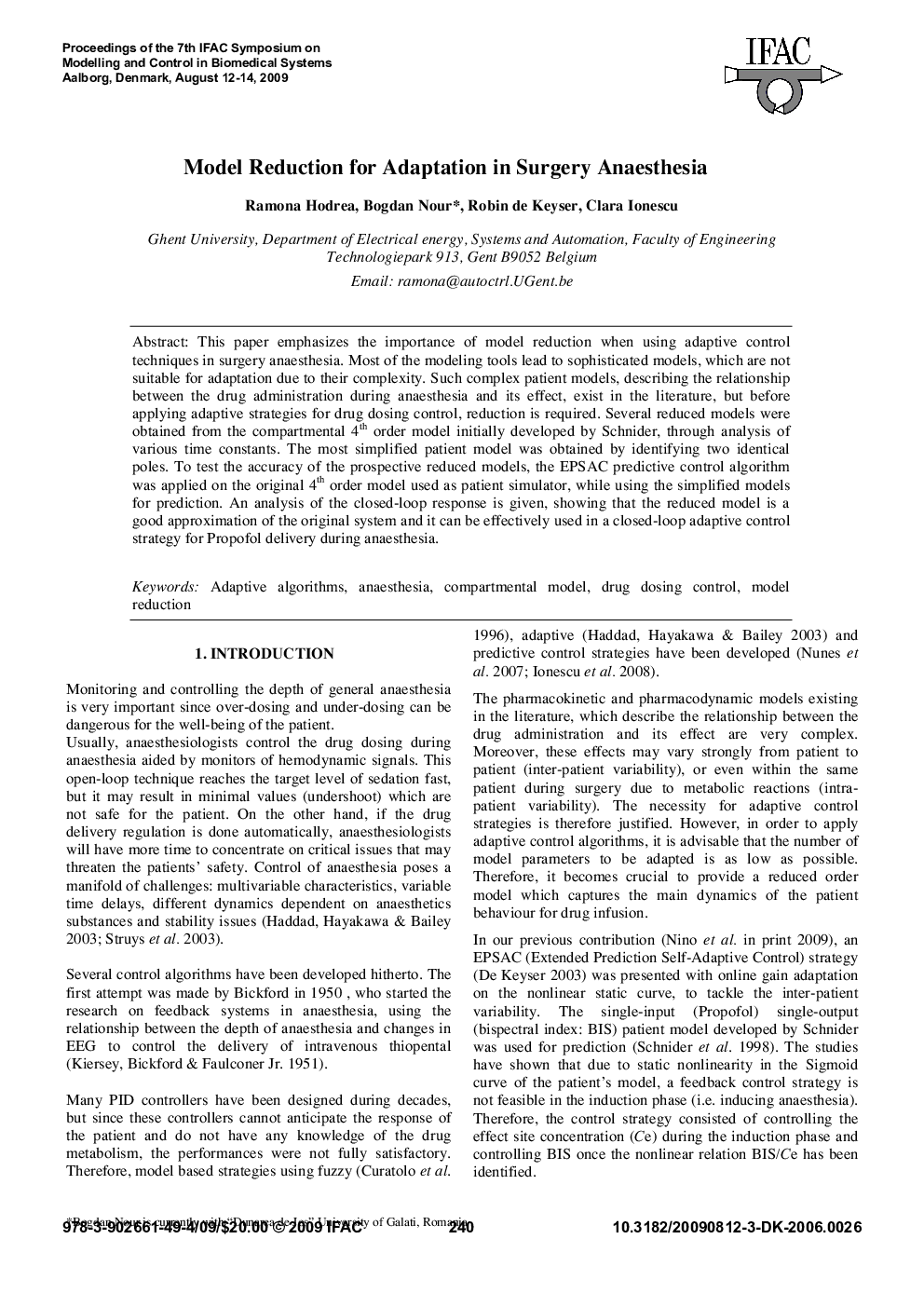| Article ID | Journal | Published Year | Pages | File Type |
|---|---|---|---|---|
| 719466 | IFAC Proceedings Volumes | 2009 | 6 Pages |
This paper emphasizes the importance of model reduction when using adaptive control techniques in surgery anaesthesia. Most of the modeling tools lead to sophisticated models, which are not suitable for adaptation due to their complexity. Such complex patient models, describing the relationship between the drug administration during anaesthesia and its effect, exist in the literature, but before applying adaptive strategies for drug dosing control, reduction is required. Several reduced models were obtained from the compartmental 4th order model initially developed by Schnider, through analysis of various time constants. The most simplified patient model was obtained by identifying two identical poles. To test the accuracy of the prospective reduced models, the EPSAC predictive control algorithm was applied on the original 4th order model used as patient simulator, while using the simplified models for prediction. An analysis of the closed-loop response is given, showing that the reduced model is a good approximation of the original system and it can be effectively used in a closed-loop adaptive control strategy for Propofol delivery during anaesthesia.
